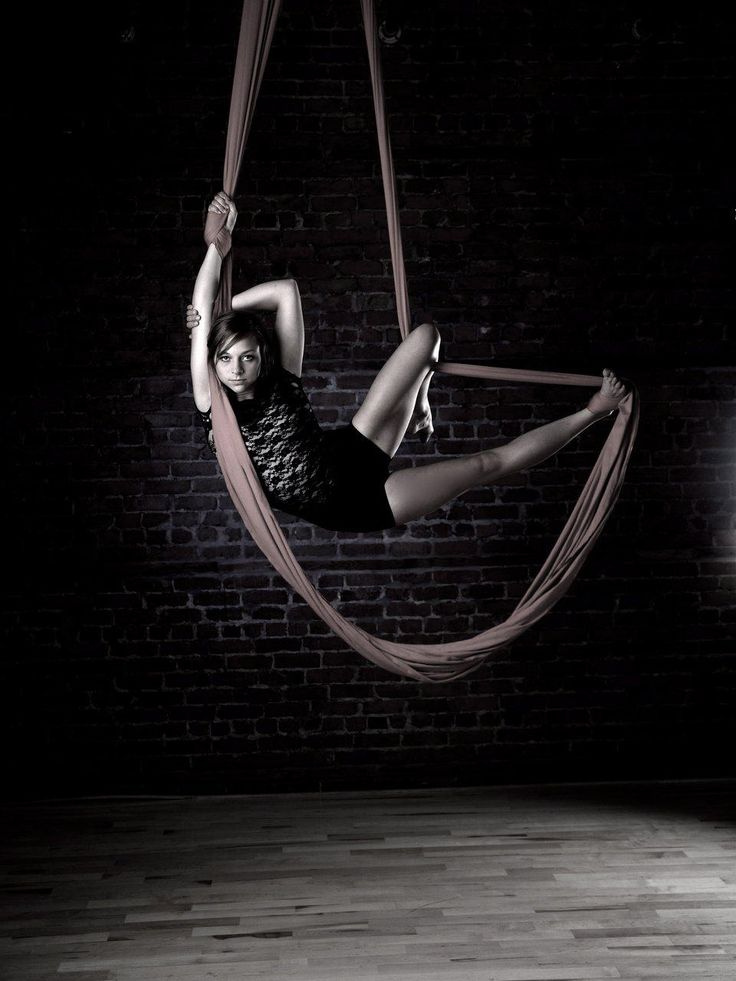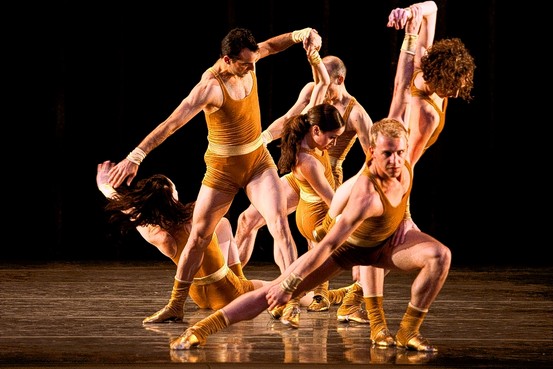How to aerial silk dance
A beginners guide to Aerial Silks
With the new year in full swing and all our Movers trying out new, cool activities on MoveGB to discover what’s #WorthSweatingFor this year, we’re introducing you to some awesome fitness classes that you should try out!
Ever considered a workout in the air? Welcome to the beginners guide to Aerial Silks!
Have you ever considered Aerial Silks? Have you ever fancied yourself as a flexible acrobat; bending, swinging and tumbling from great heights? Time to delve into why you should try Aerial Silks and how it can give you an ace full-body workout.
From incredible strengthening to increased flexibility, we’re taking a look at Aerial Silks with Lisa Truscott from Bristol Aerial. An award winning aerialist and roller skater (total goals!), Lisa has been in the world of circus since 2000. From silks to hoops, static trapeze and hula hoop, Lisa is a pro at all things circus and you can try out one of her classes on MoveGB in Bristol.
You don’t need to runaway to join the circus anymore - you can now try a class out after work or on the weekend.
What is Aerial Silks?Aerial Silks uses two lengths of fabric, secured from the ceiling, and involves defying gravity and using your strength to climb and manoeuvre the silks. Under careful instruction, you’ll learn how to wrap the silks around your body to reach cool poses that will really improve your flexibility. And as you improve with experience, you could be tumbling down the length of the silks and performing jaw-dropping spins.
I want to get into Aerial fitness - why should I start with silks?
Aerial Silks is a brilliant physical challenge. If you’re keen to try out Aerial exercises, silks are softer than other equipment (such as hoops) and make a great introduction to suspended adventures.
You get so much freedom in the air with silks, with a plethora of positions and movements you can do, and you will feel the improvements in your body after each session.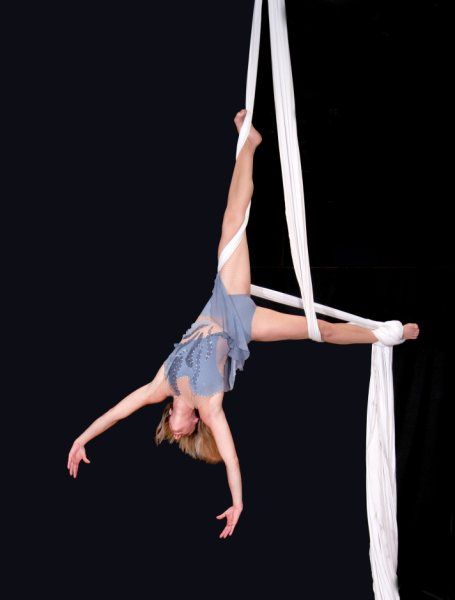
It’s a full-body workout - most notice their shoulders and upper body changing most from doing silks as you really need to work those muscles to ascend and control your movements. Even just climbing up the silks will engage many important muscles! You’ll also be igniting your core and you’ll see flexibility improve as you stretch yourself on the silks.
Sure, you’re going to ache at first but as your body adjusts to the new movements that a gym session won’t provide, you’ll begin to see what your body is capable of up in the air.
What should I wear?
Tight fitting clothing is best as you will be going upside down and be wrapped tightly in the silks. Avoid baggy clothes (unless you want to flash the class) and avoid zippers - no one wants to snag on the silks at the wrong moment!
Be sure that key areas are covered to avoid potential friction burns or scrapes i. e. armpits, lower back, stomach and knees. These can’t completely be avoided, but can be helped by wearing full-length leggings and fitted tops that can be tucked in.
e. armpits, lower back, stomach and knees. These can’t completely be avoided, but can be helped by wearing full-length leggings and fitted tops that can be tucked in.
That’s great that you’ve got flexibility and strength, but you should always start at a beginners level when you’re new to Aerial Silks. You’ll learn foundation skills, such as correct grip, and be familiarised with this new equipment. You will also be kept close to the ground as you learn the basics to ensure your safety.
A post shared by Eve Reeves • Austin, Tx (@eves_aerials) on
What can I expect at a beginners Aerial Silks class?
The class always starts with a warm-up - don’t arrive late as if you don’t warm up correctly, you risk injury. There’ll be a bit of running and cardio to get the heart rate up, followed by some gentle moving stretches.
There’ll be a bit of running and cardio to get the heart rate up, followed by some gentle moving stretches.
You'll generally then move onto the equipment and start with some warm-up climbs/suspending and a bit of body conditioning. Once everyone is comfortable on the silks, time to learn new moves or revisit moves students may have already tried at a previous session. Some moves you can learn and master in one class, others you need to revisit a few times to nail.
Leave your ego at the door - you may fail and fall, you may get tangled. You’re not going to be swooshing and diving like a swan after your first session, but it’s an incredibly supportive atmosphere where you can always learn from each other. Never be embarrassed! Stick with it and you’ll soon surprise yourself!
What other workouts should I do to improve my Aerial Silks performance?
Yoga and Pilates are definitely beneficial. They can assist you in stretching and strengthening the right parts of the body and prepare you for the challenges that silks bring.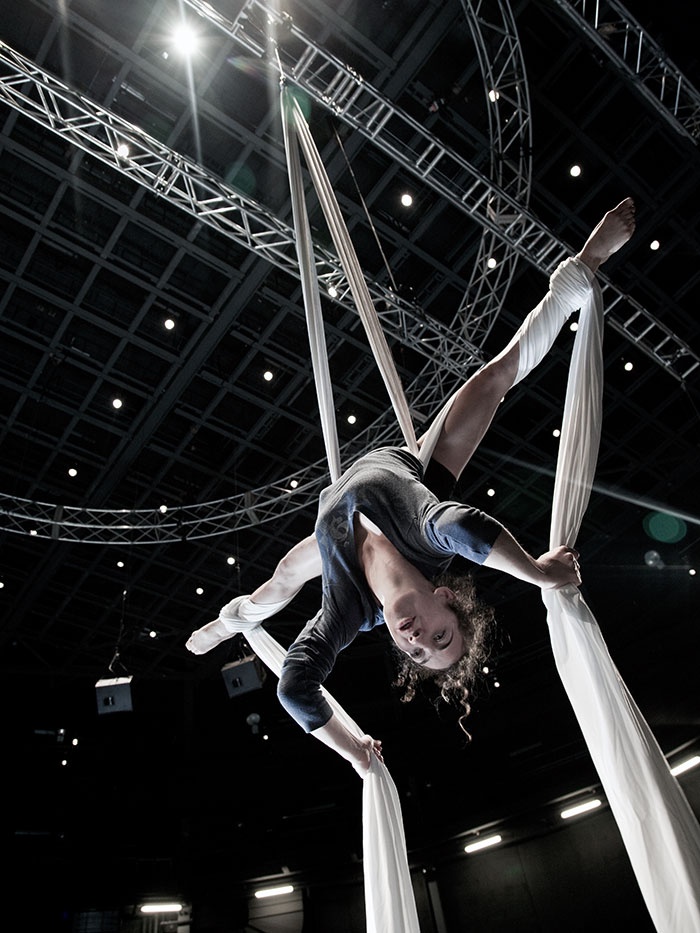 Rock climbing and bouldering can help strengthen your forearms, and of course, cardio is always a good idea. Aerial Silks contains high-intensity movements so anything you can do to strengthen your body is great!
Rock climbing and bouldering can help strengthen your forearms, and of course, cardio is always a good idea. Aerial Silks contains high-intensity movements so anything you can do to strengthen your body is great!
Every teacher will introduce basic moves that will help you achieve more complex or intermediate moves in the future. They may have different names and variations, but you can expect things such as footlocks, french climbs, figureheads and candy canes. See some beginner Aerial Silks moves below!
Ready to give Aerial Silks a go and see if it’s #WorthSweatingFor? Defy gravity, strengthen your body and having FUN is what you can expect, so what are you waiting for?
Take a look at what Lisa Truscott can do below and head over to her instagram to see some of her performances and classes! Be sure to check out her Bristol Aerial Silks classes on MoveGB!
Aerial Silk Tutorial | Aerial Silks Moves
FOR AERIAL FABRIC ACROBATICS®
SAFETY FIRST AND ALWAYS
- Check your rigging
- Remove all jewelry (including rings, watches, and earrings) before working on the fabric
- Never practice alone – have a spotter handy
- If you are tired: Stop
- If you feel something is painful: Stop
- Correct shoulder positions and core conditioning essential
- Practice all wraps low to the ground, before doing them high up
- Talk through all parts of a trick out loud
- Breathe out more than in
- Make sure you have enough distance between yourself and the floor
STRENGTH AND AWARENESS KEEP YOU SAFE!
All poses can be done in ceiling heights of 13’ or higher
Linking your movements in a small routine is the goal.
All positions can be used in combination to make a routine.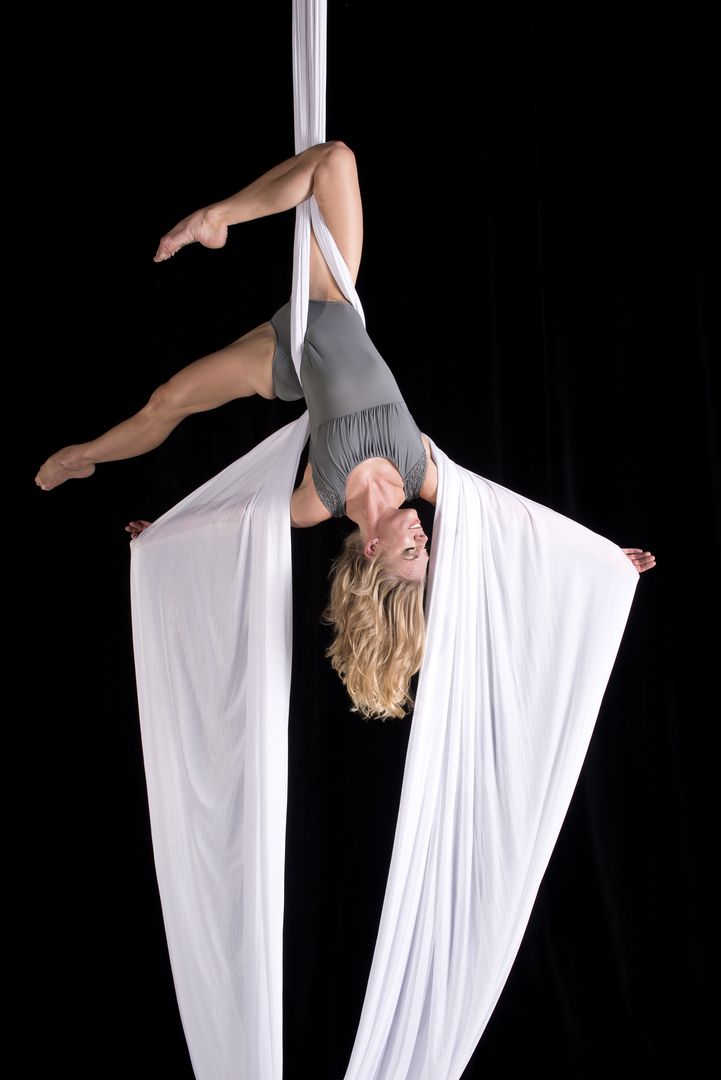
Disclaimer
Not all exercises are suitable for everyone and this or any exercise program may result in injury. To reduce the risk of injury, never force or strain. Because of individual differences in physical conditioning, consult your doctor before attempting these routines or any other fitness program. If you experience any pain or discomfort during these routines or any other fitness program, you should stop and consult a physician.
Use product only as intended and demonstrated herein.
The creators, producers, participants, and distributors of this program disclaim any liability or loss in connection with the exercises demonstrated or the instruction and advice expressed herein.
CONDITIONING ON THE FLOOR
Goal is to warm up the spine, shoulders, and work on foot, ankle, and leg articulation
Do spine warm ups, and core strengthening
Continue all conditioning from previous levels and add those presented in this level.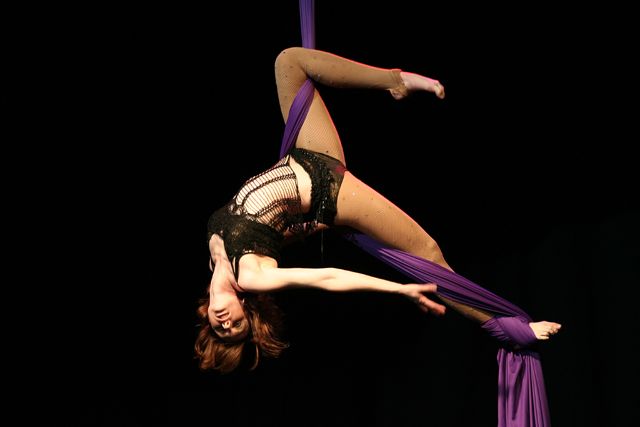
Aerial Instruction Material Level 1
Aerial Instruction Material Level 2
Aerial Instruction Material Level 3
CONDITIONING ON THE FABRIC
Straddle-Overs Alternating Sides
Goal: To Increase core abdominal strength
Do the Straddle-over on each side without coming down between sides. It is important to do them cleanly, versus doing multiple straddle-overs in a row. Keep legs straight and toes pointed. Do one at a time at first and build up to doing multiple repetitions.
Side Crunches in the Straddle-Over Position
Goal: To increase transverse abdominal strength.
From the inverted arabesque position, hooking the knee or the foot, reach arm over head and do two thigh wraps. Keep the tail of the fabric over the shoulder to keep from sliding.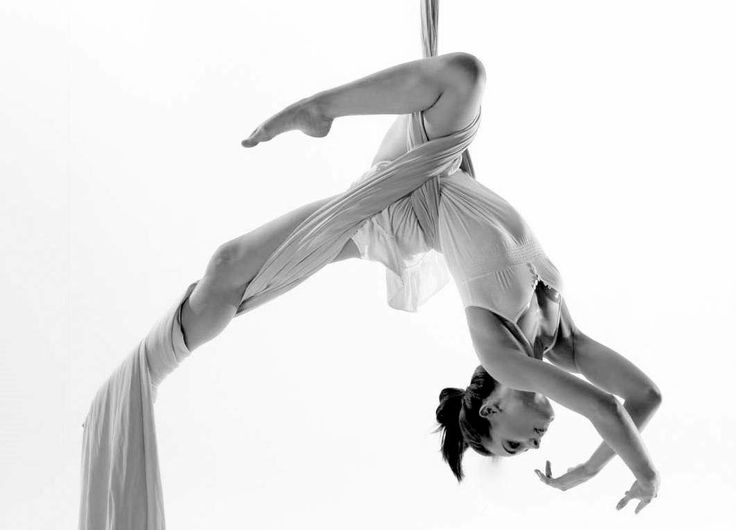 With arms behind head, do side crunches. Start with five repetitions. Then switch and do the same thing on the opposite side.
With arms behind head, do side crunches. Start with five repetitions. Then switch and do the same thing on the opposite side.
Thigh Drop Series With Preparation (Also known as the Spice Drop)
Preparation on the Floor:
Zigzag Position
Sit with legs in Zigzag position and lower body down. The goal is to be flat on the ground with the back and most of the hips touching the floor. Knees are as close to the floor as possible, if this position is not possible, sit leaning on forearms. Stay in this position for a moment to stretch the quads of both legs. Remember to breathe. This is also a hip opener as well as a quad stretch. Do both sides.
Hip Opener Stretch
Laying on the back, one leg bent across the other leg that is straight, lace hands behind leg and push bent leg out with the elbow at the inner thigh to open the hips.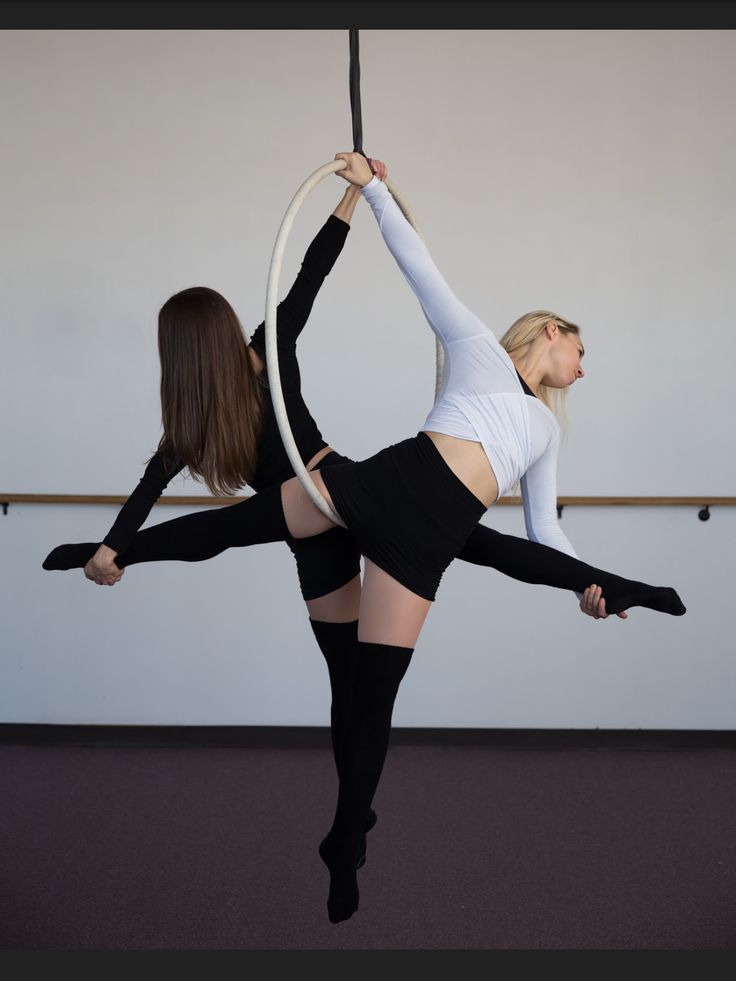 Do both sides. Warming up the hips is important to prepare the body for the thigh drop. The force of the drop will force the legs to turn out.
Do both sides. Warming up the hips is important to prepare the body for the thigh drop. The force of the drop will force the legs to turn out.
Thigh Drop Series
Climb at least three or four times, in a ceiling height of 13’ or more. In a low ceiling, this drop is not recommended.
First Part:
Straddle into an inverted arabesque hooking foot, or knee. Wrap fabric tail around leg twice, keeping wraps up at the top of the thigh. Wrap once around the waist, and over the shoulder. Keep the fabric tail over the shoulder. Sit up, straighten the bent leg and roll body into the pole of the fabric by turning the hips into fabric, this is similar to Hip Key Spin position. Hold onto the fabric tail with both hands, hands over the head. Bend the bottom leg, open hips, keep top leg straight. First just lower into the drop, after lowering into position two or three times try the drop quickly. Always keep the bottom leg bent, hold onto the tail of the fabric.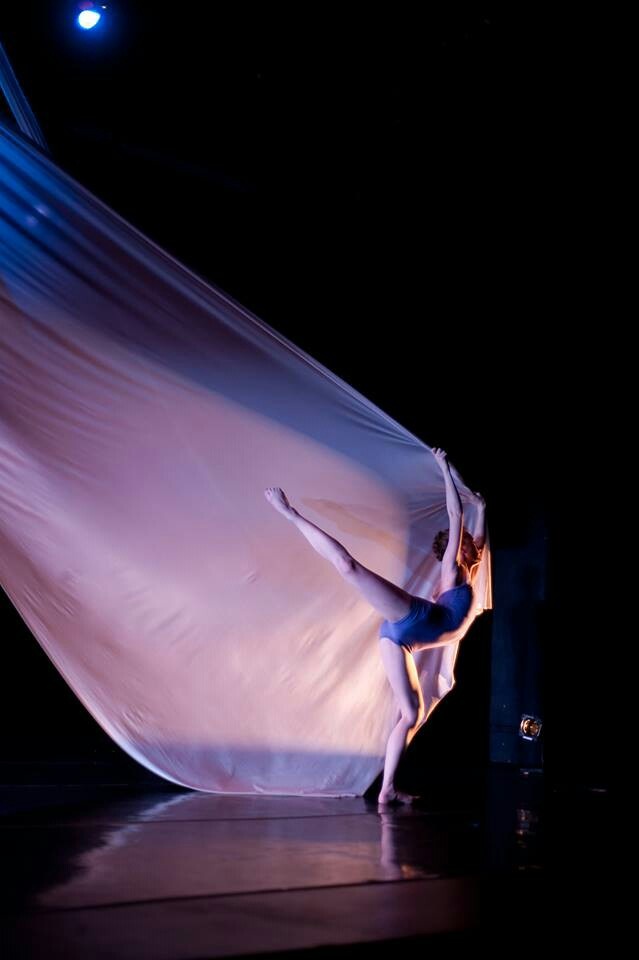
Second Part, The Thigh Drop (Also known as the Star Drop):
Straighten top leg, holding the tail with one or both hands above the head. Unroll in a single star drop. Keep the body as horizontal to the floor as possible. Core Engaged.
To Come Out: Prop free leg on the back of fabric to make it easier to sit up, let fabric come off the thigh.
Coffin
Single foot lock on a single fabric. Do from either locking one foot or going from a double foot lock and dropping one foot. Moving from a double foot lock to a single foot lock is preferred for more stability.
Starting from the double foot lock:
Drop one foot from the lock, making sure the fabric is on the inside of the thigh. Cross free leg over the locked one and lower to a sitting position.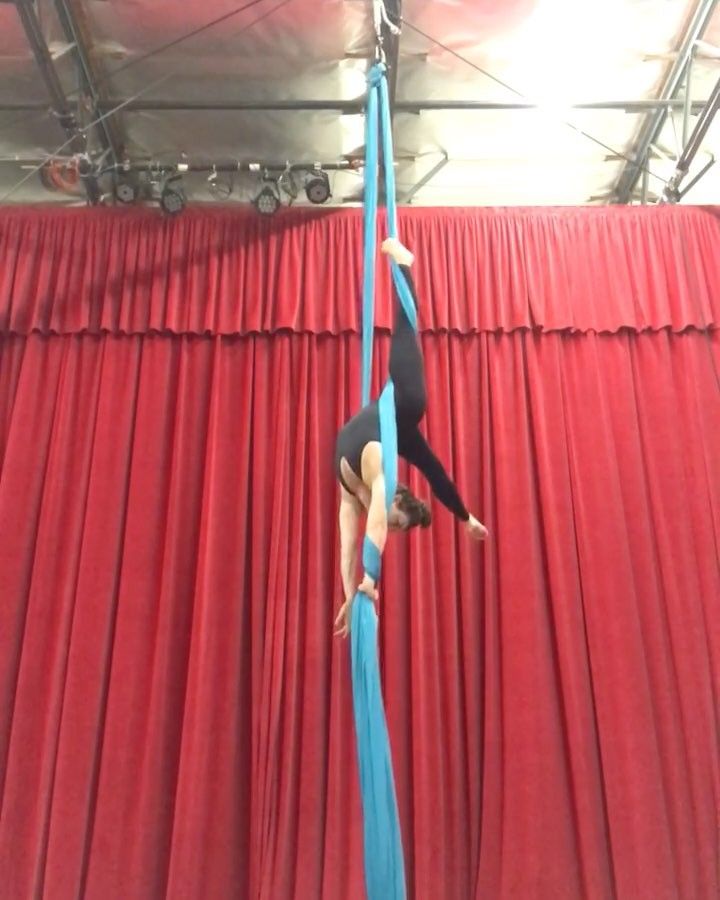 The free fabric can be on either side of the body, it does not matter which side, whichever side it is on, make sure it is in front of the armpit. Hold the pole of the fabric so the free fabric is trapped against the armpit. With the opposite hand, reach down behind the body, take the tail around the back and up to meet the hand holding the fabric. The tail and the pole of the fabric will now be held in the same hand in a cradle or teardrop, the fabric should be just below the shoulder blades. Extend the leg that is locked, and either let the free leg drop down or cross over the locked foot, keep chest and hips facing the ceiling.
The free fabric can be on either side of the body, it does not matter which side, whichever side it is on, make sure it is in front of the armpit. Hold the pole of the fabric so the free fabric is trapped against the armpit. With the opposite hand, reach down behind the body, take the tail around the back and up to meet the hand holding the fabric. The tail and the pole of the fabric will now be held in the same hand in a cradle or teardrop, the fabric should be just below the shoulder blades. Extend the leg that is locked, and either let the free leg drop down or cross over the locked foot, keep chest and hips facing the ceiling.
To Come Out: Bend the locked leg to come back to the center, drop the tail, come to a stand.
Pagoda Pop
Hang between the fabric, wrap both ankles twice.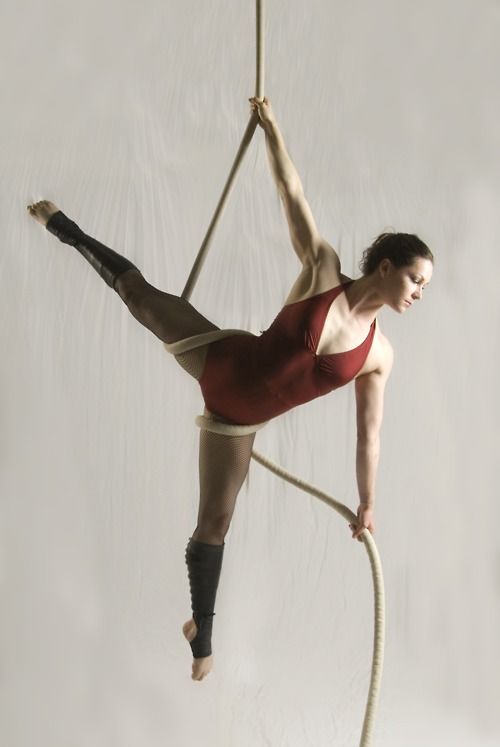 This is the same position as the Bow Pose from the Level 2 Aerial Fabric Acrobatic Instructional Material Except in this trick your legs remain straight. Bring upper body through the fabric, keeping toes together push fabric so it is below the hipbones. Bend at the waist, reach down and take the fabric from the outside, under the arches of the feet. Hold both tails tightly in the hands.
This is the same position as the Bow Pose from the Level 2 Aerial Fabric Acrobatic Instructional Material Except in this trick your legs remain straight. Bring upper body through the fabric, keeping toes together push fabric so it is below the hipbones. Bend at the waist, reach down and take the fabric from the outside, under the arches of the feet. Hold both tails tightly in the hands.
Important: Straddle as wide as possible!
Pop over and bend knees. Knees need to come to the outside of the fabric. You will get stuck if your legs go through the middle.
To Come Out: Sit up, reach behind and underneath knees and grab fabric as high as possible behind the calves, pike and do a backwards roll to return to the upright position.
Corset Series
First Part:
Climb with fabric split and with a good amount of height, if in a low ceiling climb all the way to the top. Hang between the fabrics, straddle up and crochet one foot around both fabric strands. The free leg can be in any position, but preferably with ankles crossed over each other. Take the tails of the fabric and make a cross across the mid back at the waist, then cross fabric in front over the rib cage, then cross fabric once more on the back. This is similar to the Angel Swing learned in Level 1 Aerial Fabric Acrobatic Instructional Material. Bend both legs, find the edges of the fabric, straddle, pike and do an Angel Flip to the upright position, the tails of the fabric are spread like wings. Drop both tails. The position constricts the middle and is uncomfortable.
Hang between the fabrics, straddle up and crochet one foot around both fabric strands. The free leg can be in any position, but preferably with ankles crossed over each other. Take the tails of the fabric and make a cross across the mid back at the waist, then cross fabric in front over the rib cage, then cross fabric once more on the back. This is similar to the Angel Swing learned in Level 1 Aerial Fabric Acrobatic Instructional Material. Bend both legs, find the edges of the fabric, straddle, pike and do an Angel Flip to the upright position, the tails of the fabric are spread like wings. Drop both tails. The position constricts the middle and is uncomfortable.
Second Part:
Do another straddle over but do not let go of the poles of the fabric. Crochet one leg on one fabric, take the tail at the waist, whichever is on the outside, farther away from the body. Hold it to the outside away from the body so as not to slide. Bend the top leg, sit up, grab above the knee, come upright and hang being held in the armpit and the knee.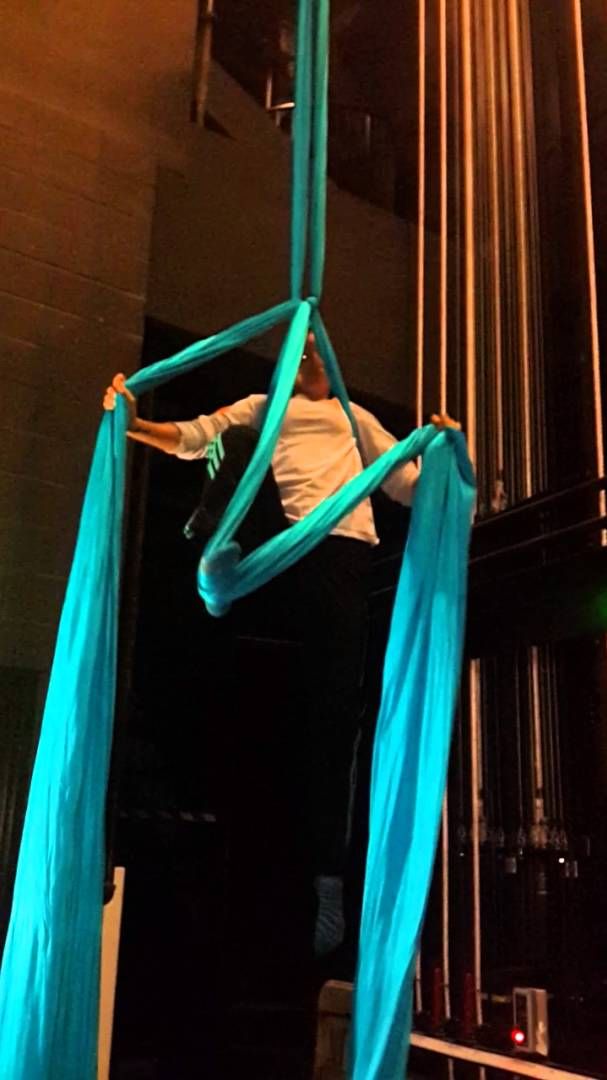 The pose is similar to the Half-in-half-out Slip Knot Pose in Level 1 Aerial Fabric Acrobatic Instructional Material. Swim the arm through so the fabric moves from the armpit to the neck. Take the bottom leg and cross it over the top leg to balance in the Basket Pose, Learned in the Slip Knot poses from Level 1 Aerial Fabric Acrobatic Instructional Material. Take the fabric off from behind the neck so it is in the armpit. Swim the arm around the fabric in a Flamenco grip, crocheted at the elbow. Straighten both legs, open hips into the Angel Pose, as learned in the Slip Knot series.
The pose is similar to the Half-in-half-out Slip Knot Pose in Level 1 Aerial Fabric Acrobatic Instructional Material. Swim the arm through so the fabric moves from the armpit to the neck. Take the bottom leg and cross it over the top leg to balance in the Basket Pose, Learned in the Slip Knot poses from Level 1 Aerial Fabric Acrobatic Instructional Material. Take the fabric off from behind the neck so it is in the armpit. Swim the arm around the fabric in a Flamenco grip, crocheted at the elbow. Straighten both legs, open hips into the Angel Pose, as learned in the Slip Knot series.
To Come Out: Bend top leg, bring it out, unwrap arm, hips open to ceiling, hold both tails tightly so as not to slide, uncross the tails and do an Angel Flip.
Iron Cross
In climbing position, bring shoulders through the fabric. Feet are held tightly together, thighs engaged. Lean body backwards away from the fabric, thread each hand through the middle of the fabric, grab and hold firmly with straight arms. Hold arms out straight into an iron cross-position.
Feet are held tightly together, thighs engaged. Lean body backwards away from the fabric, thread each hand through the middle of the fabric, grab and hold firmly with straight arms. Hold arms out straight into an iron cross-position.
Alternate Starting position: From a single foot lock,
Thread arms through, grab fabric, un-lock foot, and spread arms into the Iron Cross Pose.
Inverted Splits
Climb with the fabrics separate, ceiling height does not matter. Hang between the fabrics. Pull body upside down in an egg position, invert, then open into a splits, arch back and drop head back fully.
Variations: A stag split, then a full split, or a zigzag split.
To Come Out: Return to the Egg position and roll to upright.
Thread the Needle
Climb with fabric split, height does not matter. Hang between fabrics. Go into the Inverted Splits. Back leg drops towards the ground as the body rolls up onto the front leg, simultaneously bring the elbow of the back leg in towards the rib cage so that the roll can be accomplished.
A tipping and pulling action is required if the elbow is not tucked in the roll cannot be done.
Fish Hook
Climb with fabric split, height does not matter. Hang between the fabrics first in the Egg position, invert, then straight body like the Jackknife position. Prop one foot on fabric, arch back, shift weight so your body looks like the letter “J”, or a Fish Hook. Always do this trick slowly and deliberately!
Always do this trick slowly and deliberately!
To Come Out: Think about pulling shoulder blades apart, sinking the rib cage back to bring body to a neutral position, tuck and roll down.
Variation: Hook both feet in a Bird Cage position.
To Come Out: Return to the Egg position and then upright.
Hip Key Straddle
Climb with fabric split, height does not matter. From Hip Key wrap bottom leg once. Separate the poles of the fabric. Swim the arms and body through between the separated fabric. Do not lose the lock that is around the leg. Flip over to the back and open legs in a straddle position.
To Come Out: Sit up holding fabric over head and allow fabric to fall from body.
Hip Key Scorpion Pose and Drop
Start in the Hip Key, take tail of the fabric and toss it over the top leg twice not more than two times. Pull a little bit of slack at the top next to the thigh. Take top hand and hold on next to hip. Open hips and hook bottom leg on fabric. Make sure that the bottom leg is in front of the tail or the drop cannot be accomplished. Lower into position first. When VERY confident that the knee will hook the fabric, do the drop quickly.
Scorpion Pose: Pull foot to head if the back is flexible.
To Come Out: reach behind leg and unwrap.
Single Pencil Drop:
This drop needs at least a 13’ ceiling or more. Do an Inverted Arabesque; wrap the bottom leg with two thigh wraps, and one stomach wrap. With fabric over the shoulder, sit up just enough to reach behind the knee. Straighten legs; turn body into the pole of the fabric, bringing legs into a slight pike. This position is uncomfortable; your stomach will be very compressed. Hold tail with both hands over the head, keep legs together, open hips out and roll straight like a pencil. Access the core muscles to stay parallel to the floor during the drop. Hands need to stay over the Head and You MUST Hold the tail of the Fabric.
Do an Inverted Arabesque; wrap the bottom leg with two thigh wraps, and one stomach wrap. With fabric over the shoulder, sit up just enough to reach behind the knee. Straighten legs; turn body into the pole of the fabric, bringing legs into a slight pike. This position is uncomfortable; your stomach will be very compressed. Hold tail with both hands over the head, keep legs together, open hips out and roll straight like a pencil. Access the core muscles to stay parallel to the floor during the drop. Hands need to stay over the Head and You MUST Hold the tail of the Fabric.
To Come Out: Prop free leg on the backside of the fabric, sit up, and let fabric slide off the thigh.
Goals for Level 4:
Build a routine with good transitions between all tricks.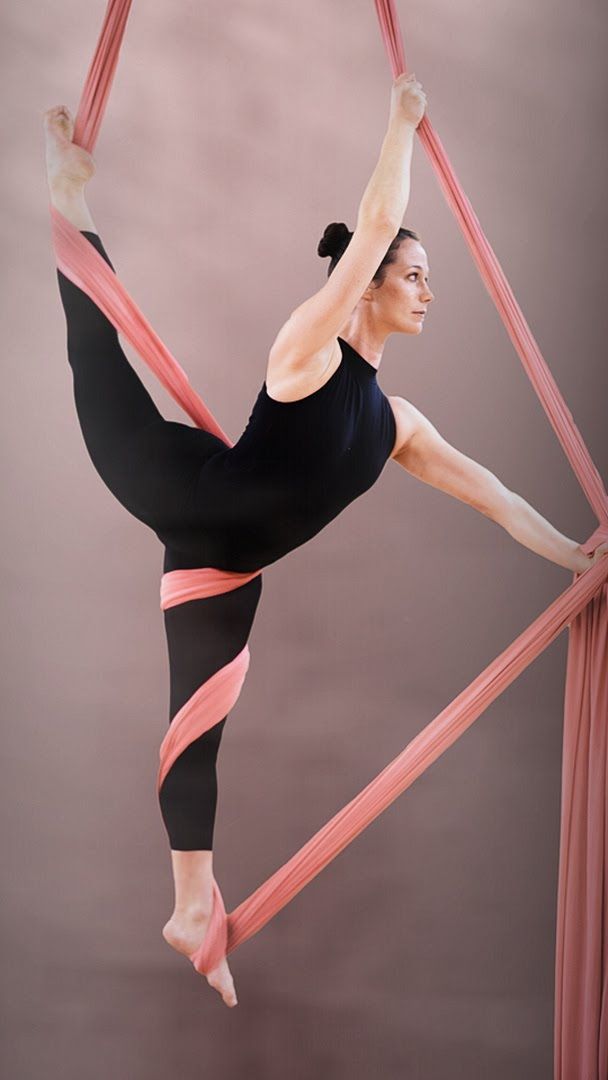
Use poses from all levels of the curriculum.
Focus on the quality of the movements.
Create different routines for different pieces of music.
Continue to explore new transitions, and practice with a partner!
Routines should have graceful transitions, rest poses, and all movements should seem effortless and fun!
By repeating your basic routine each time you practice, your grace, style, and stamina will increase!
Remember, progress builds from practice, experimentation, and working together!
Dancing in the air: gymnastics on canvases
Forgot your password?
Enter your card number and we will send you instructions on how to reset your password
Card numberHome All events
May 30, 2018
Blog group lessons Dancing Takeoff
Learn the art of beautiful flying and graceful dancing in the air - why not? Gymnastics on canvases today is available not only to athletes and circus performers, but to everyone.
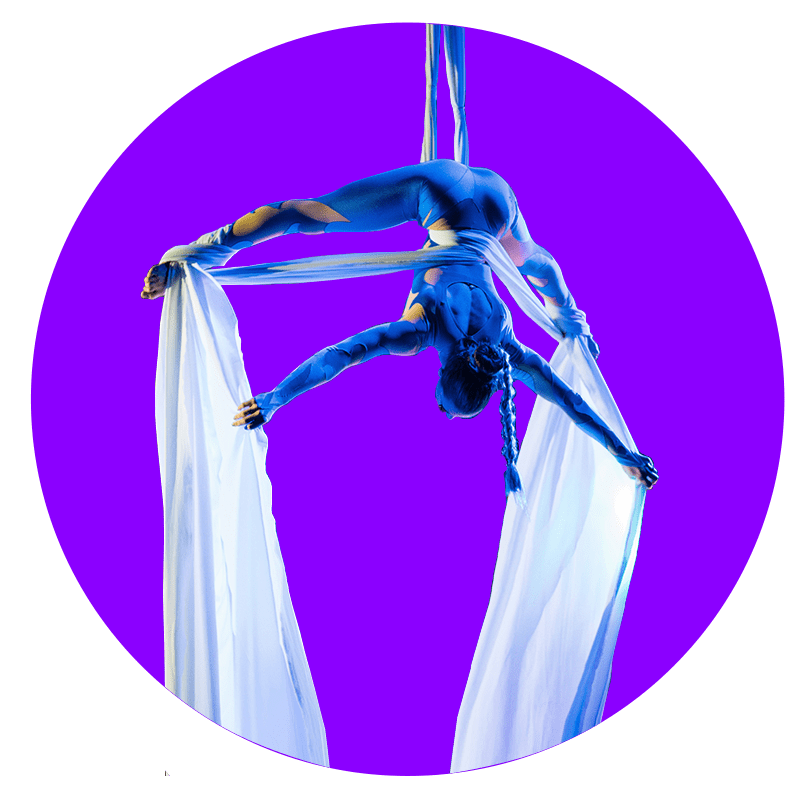
Along with the Pole Dance, the ring and the mast, the aerial sheets are a spectacular modern equipment for training and spectacular performances on stage.
The direction has different names: dance on canvases, gymnastics on canvases, aerial canvases, dance on circus canvases, air dances (Aerial Dance) or air silks (Aerial Silks).
Such an abundance of terms is explained by the large number of techniques used: gymnastics, acrobatics and dance. The elements of movement are very similar to Pole Dance, but require even more skill and preparedness: unlike a pole, canvases are a very mobile projectile.
How did the direction come about?
There are several versions of the origin. According to Just a Circus by Stephen Santos, aerial gymnastics is the latest aerial art form. It originated at 1959 at the French circus school. According to some other researchers and circus performers, acrobatics on aerial canvases appeared as a prototype of gymnastics on belts, which originated in China in the 17th century.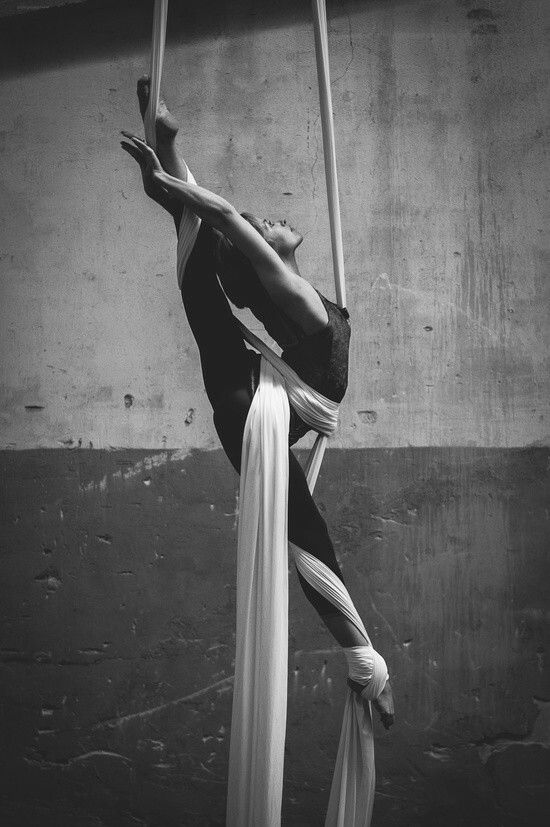 At this time, various types of performing arts were rapidly developing, so artists had to constantly invent new performances to attract an audience.
At this time, various types of performing arts were rapidly developing, so artists had to constantly invent new performances to attract an audience.
What elements will you study?
Aerial sheet gymnastics includes three main categories of tricks: lifting, winding, breaking.
- Lifts are used to perform tricks at height. There are several main types of lifts - basic lift, French lift, Russian lift.
- Wraps – static poses, when the gymnast wraps the cloth around his body or one of its parts, giving his body a certain pose – hanging, swinging, splits, etc.
- Fall – a fall from a height after preliminary wrapping of the body in such a way that during the flight part of the canvas unwinds and the gymnast is stopped by the canvas wrapped around his body. The break can be simple and with torsion of the body. Cliffs are the most difficult and potentially dangerous, but at the same time, the most spectacular stunts.
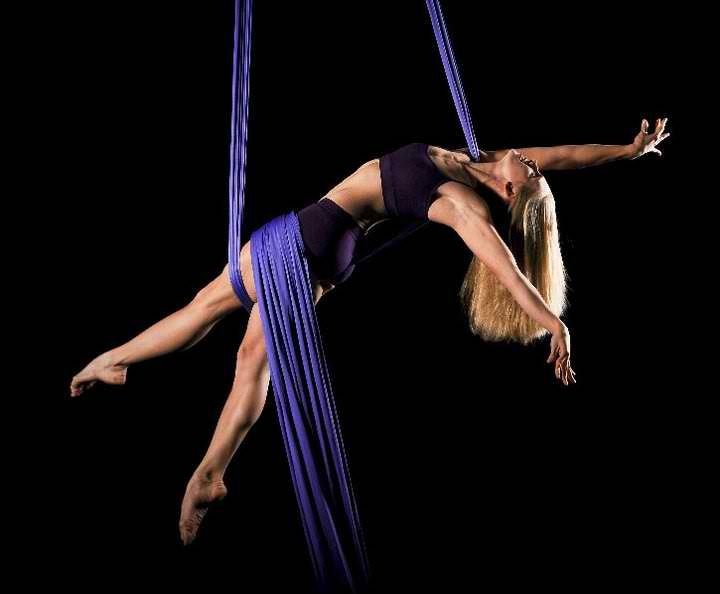
If you really want to fly in reality, but you are afraid of exposing yourself to excessive risks, aerial activities are perfect for you!
We are waiting for you at the group lesson "Air canvases" every Monday at 17:30, room No. 304 in the club on Vzlyotnaya, 25.
You can sign up for a personal training at Kristina Radchenko: tel. +7 (960) 948-91-52.
What do I need to get started?
Only your wish! It is not necessary to be in perfect physical shape, the activity is also suitable for beginners. You can study in group lessons or personally with a trainer. Depending on the level of your preparation, the trainer will select the appropriate training program.
The Benefits of Training
Aerial sheets are a great addition to the main training process. Training will strengthen the muscles of the arms, back, shoulders and abs, improve coordination, plasticity and rhythm, develop flexibility
How is the lesson structured?
At the lesson you will have a warm-up, stretching, learning and practicing various tricks.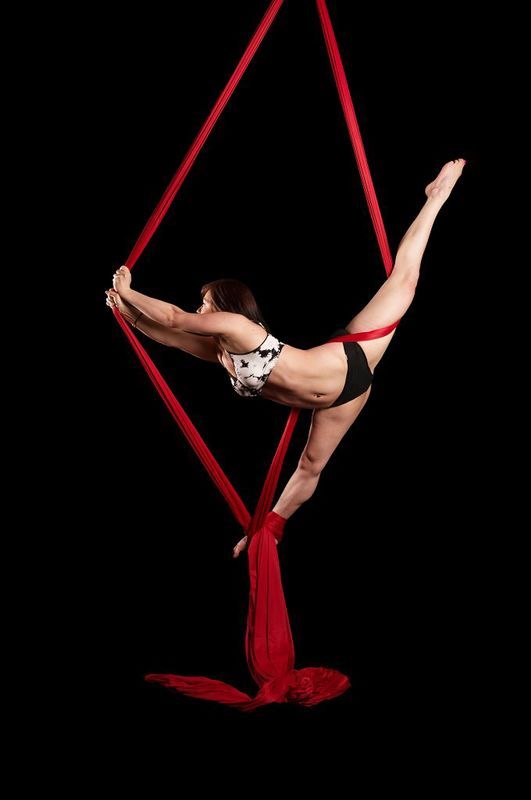 Beginners learn basic rolls, tricks, lifts and transitions. Continuing learn power elements, dynamic tricks and cliffs.
Beginners learn basic rolls, tricks, lifts and transitions. Continuing learn power elements, dynamic tricks and cliffs.
What to wear to class?
It is better to wear tight-fitting clothes for class, top with long sleeves.
Have you ever been to our club? Try canvases and other group programs for free!
on Vzletnoy
at Krasnoarmeisky
SurnameFirstnamePatronymicPhoneI agree with the privacy policy
Come visit us! Trial visit - a full day of classes in any club.
You can test all the facilities of the club for free, evaluate the quality of the equipment and get acquainted with the coaching staff. You can visit the clubs as a guest only once. If you liked it and want more, we advise you to familiarize yourself with the cards and promotions of clubs.
Share on social media networks
November 01
FITNESS FOR 7 MONTHS
With us the result...
October 01
Into the new season with Magis Sport!
Short card for 5 months from 13800...
01 September
ALL YOURS!
Until September 15, annual cards in Magis Sport at the price of a permanent...
Write to us
Ask us any question you are interested in, share your feedback or suggestion.
at Vzletnoy
at Krasnoarmeisky
Introduce yourselfPhone numberMessageI agree with the privacy policy
Aerial Silks - the embodiment of lightness and beauty
Everyone can envy the grace of aerial gymnasts and dancers.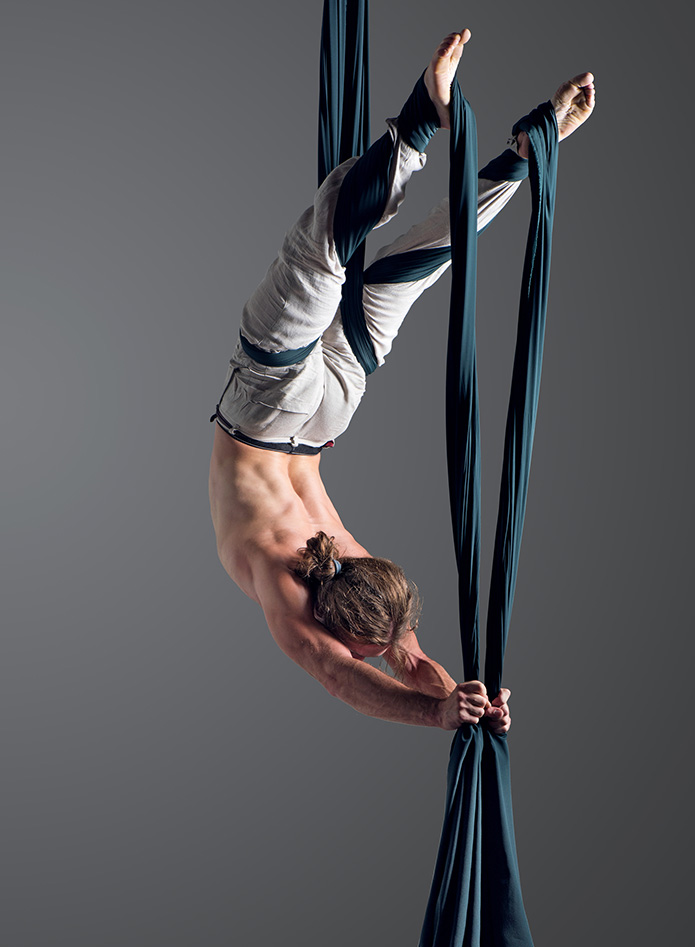 What can we judge about art, which is a combination of these two areas. Aerial silks (from English means "airy silks" or "airy canvases") speaks about the features of the new direction - the combined acrobatic elements from aerial gymnastics are performed here on long fabric canvases. The edges of the canvas are not processed so that thickening and inconvenience are not created during classes. Canvas gymnastics is a growing area of gymnastics and dance, where tricks are performed in the air.
What can we judge about art, which is a combination of these two areas. Aerial silks (from English means "airy silks" or "airy canvases") speaks about the features of the new direction - the combined acrobatic elements from aerial gymnastics are performed here on long fabric canvases. The edges of the canvas are not processed so that thickening and inconvenience are not created during classes. Canvas gymnastics is a growing area of gymnastics and dance, where tricks are performed in the air.
This direction, originating from circus aerial gymnastics, due to its beauty and showiness will not leave anyone indifferent. Abroad, in the USA and Europe, this kind of art has been known for a long time. With us, it is just beginning to emerge. The first impulses to master dances on canvases began about 10 years ago in circus numbers.
Today aerial canvases are an accessible sport for everyone, regardless of age and physical condition. Dancing on aerial silks contributes to the development of all muscle groups, improves flexibility, helps to start listening to your own body, since many elements are based not so much on strength exercises, but also on balance and accuracy of movements.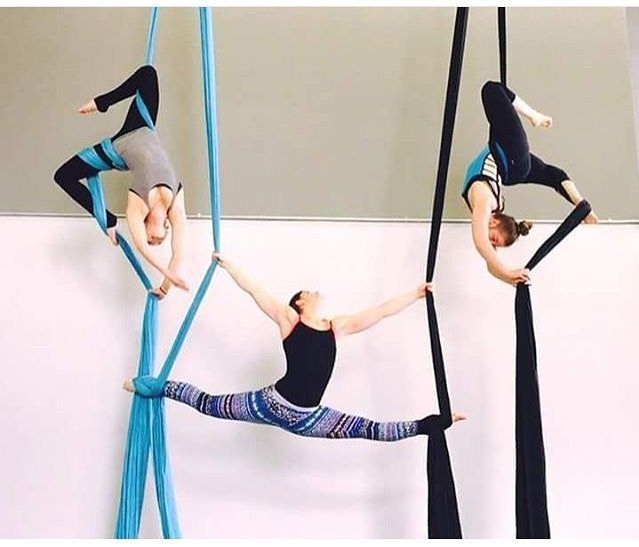 Air canvases are great for beginners in sports and dancing, and for those who already have experience in other areas. Of course, this projectile is not so simple, and if you have not dealt with sports or dancing before, then it is unlikely that you will be able to master it quickly. However, do not despair - many tricks are quite simple, and with some effort, you will definitely achieve stunning success.
Air canvases are great for beginners in sports and dancing, and for those who already have experience in other areas. Of course, this projectile is not so simple, and if you have not dealt with sports or dancing before, then it is unlikely that you will be able to master it quickly. However, do not despair - many tricks are quite simple, and with some effort, you will definitely achieve stunning success.
It should be noted that dancing on canvases has a positive effect on the body and well-being. During aerial dance exercises, all major muscle groups are involved, while excess calories are easily burned. Air canvases will help to make the figure slim, and the movements will become more graceful and plastic. Particular attention in aerial silks classes is given to stretching, which will make your body flexible and dexterous.
Airy canvases are able to reveal the true grace and attractiveness of the female body. At first glance, it may seem that such dances have many similarities with the pole.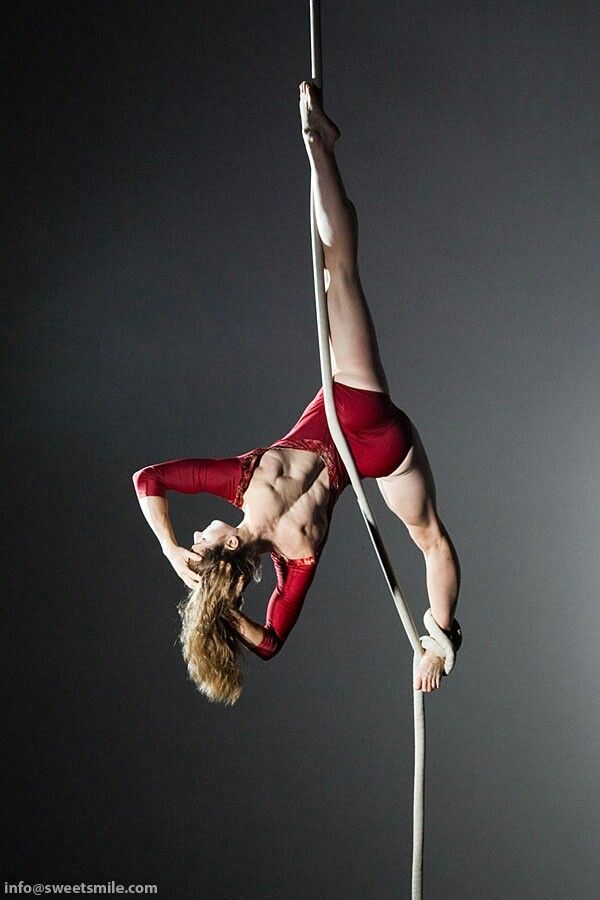 Both directions require strength, endurance and flexibility. However, these are different things. Pylon fans are far from always able to perform gymnastics elements on canvases. After all, the pylon is static, and the canvases are constantly in motion. In addition, the canvases have more space for self-realization. You can invent your own elements and constantly repeat them to the music. Another advantage is that the canvases will not leave as many bruises on the body as the pylon does, dancing on the canvases, any girl can feel graceful and light, like on a swing. Here you can work both individually and together.
Both directions require strength, endurance and flexibility. However, these are different things. Pylon fans are far from always able to perform gymnastics elements on canvases. After all, the pylon is static, and the canvases are constantly in motion. In addition, the canvases have more space for self-realization. You can invent your own elements and constantly repeat them to the music. Another advantage is that the canvases will not leave as many bruises on the body as the pylon does, dancing on the canvases, any girl can feel graceful and light, like on a swing. Here you can work both individually and together.
There is an opinion that gymnastics on canvas requires great strength and endurance. This statement is wrong. Physical fitness can even be negative or zero. If a person has never played sports before, he can still come to class. Body weight also does not matter. People who attend classes on aerial canvases can be of very different builds, and all can achieve amazing success.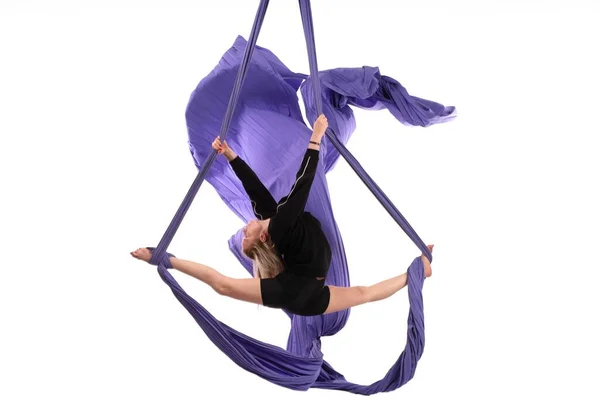 The main thing is to correctly and competently assess your strengths.
The main thing is to correctly and competently assess your strengths.
Of course, a coach will not be able to force a beginner to perform complex strength elements above the ground on the first day. First, work is underway on general physical training: muscles are strengthened, stretching develops. On canvases, it is recommended to start with twists so that the body adapts and understands what to prepare for. Twisting is an element in which the canvas must be wrapped around the hand and rotated in a certain position.
Loads gradually increase: more complex elements are mastered over time.
The training proceeds as follows: the exercises begin with a dance warm-up. This is an important stage, since it is necessary not only to do acrobatic elements, but also to do choreography. Then the main part follows: in this case, various twists, breaks (if the level allows), as well as power elements are performed. At this stage, athletes work out the technique. At the end of the class, exercises are performed either for stretching or for strengthening muscles. Training lasts an average of about an hour.
Training lasts an average of about an hour.
For easier mastering of dancing on canvases, you can combine training and classes in the gym. Strength exercises for the back, abs and, of course, for the arms. Since the main burden is taken on the hands. Also, don't forget to stretch. In muscles, it is necessary to develop not only strength, but also flexibility.
This direction is a passion for people of all ages. Both for youth and children, and for adults. By the way, young men are also fond of this direction.
Any comfortable clothing can be worn for canvas dancing. You should not choose things that are too wide, so as not to get tangled in the fabric. Something that does not restrict movement, you can even tight-fitting. From shoes, you can use ballet flats or sneakers. Classes can also be done barefoot or in socks.
We should also not forget that dancing on canvases is traumatic. But if you can adequately assess your strength, then the danger will drop to a minimum.